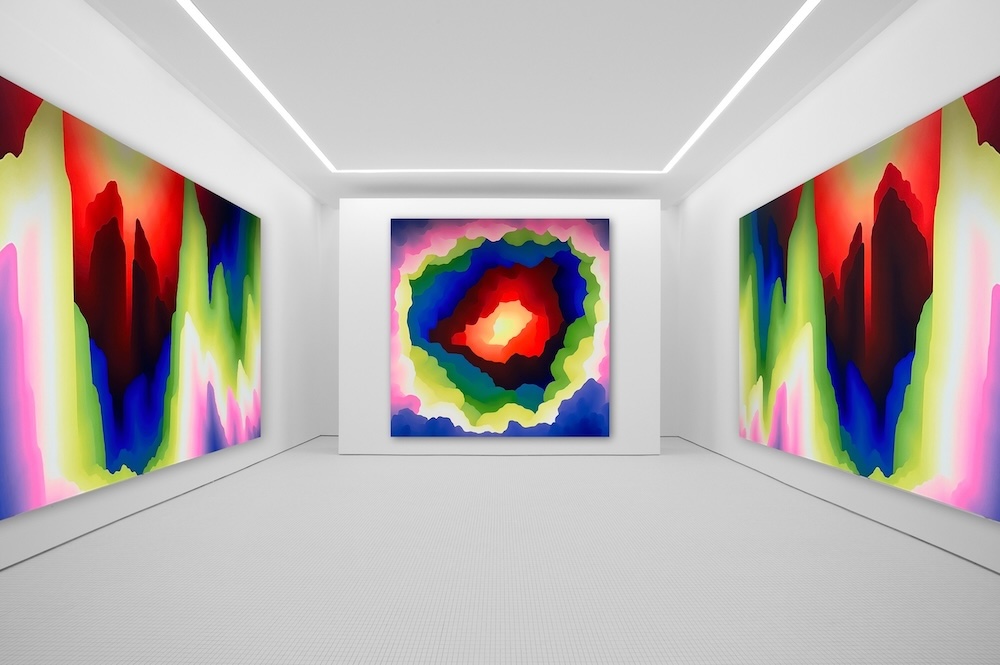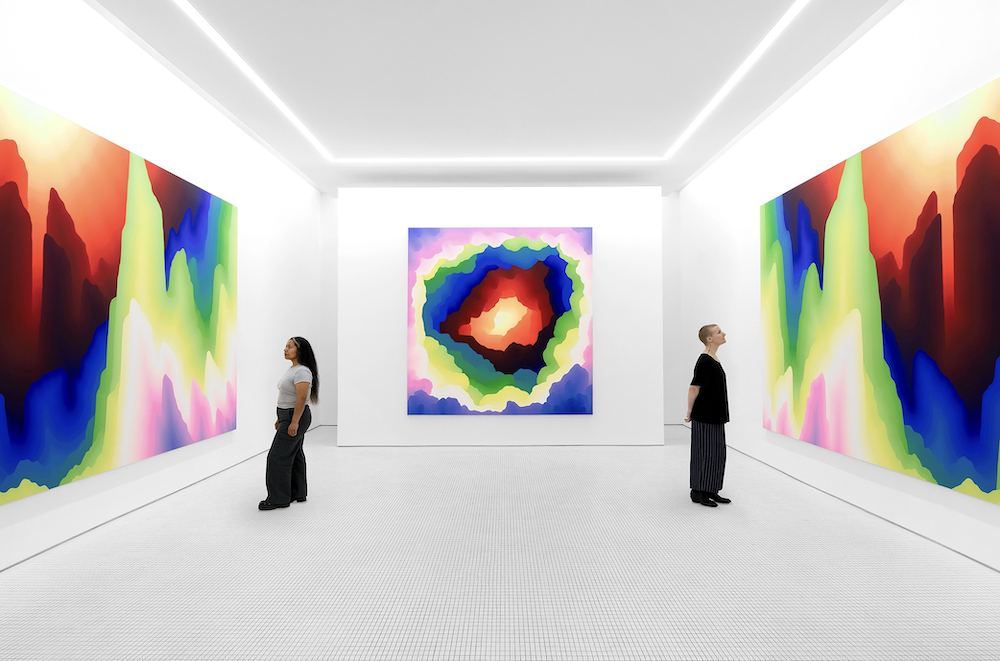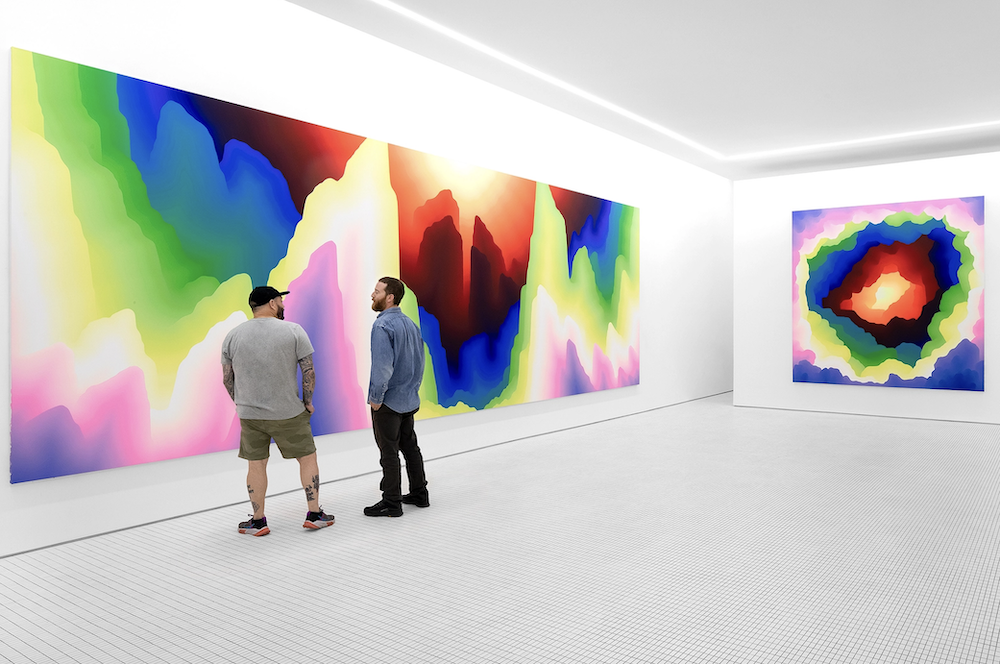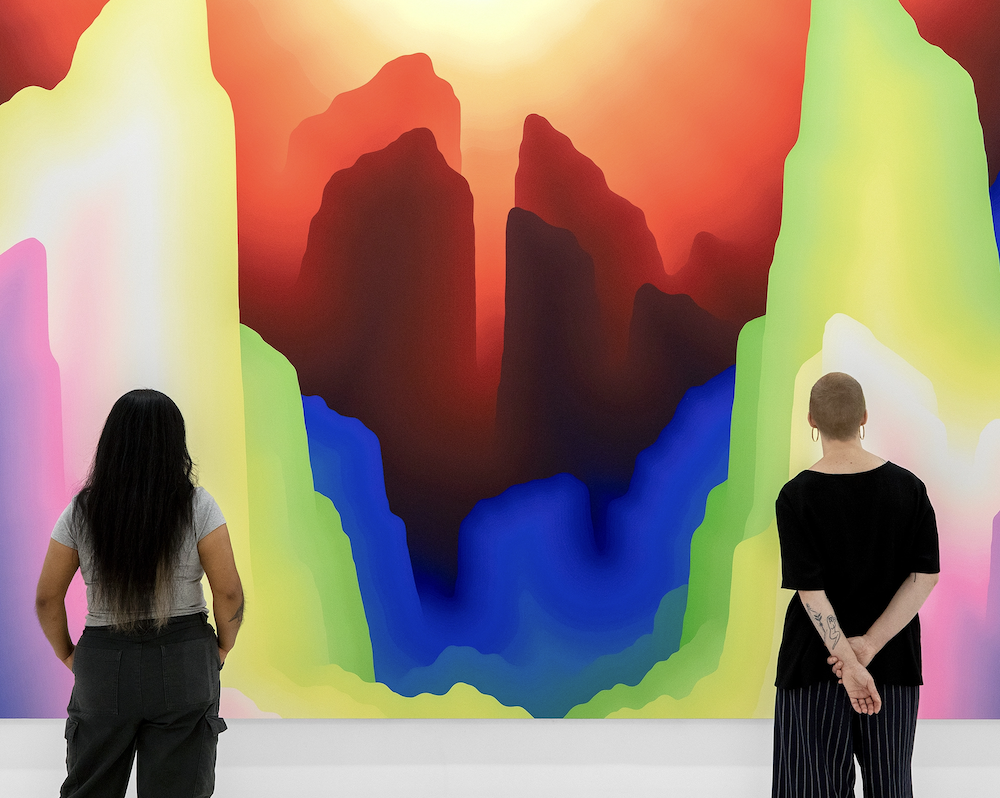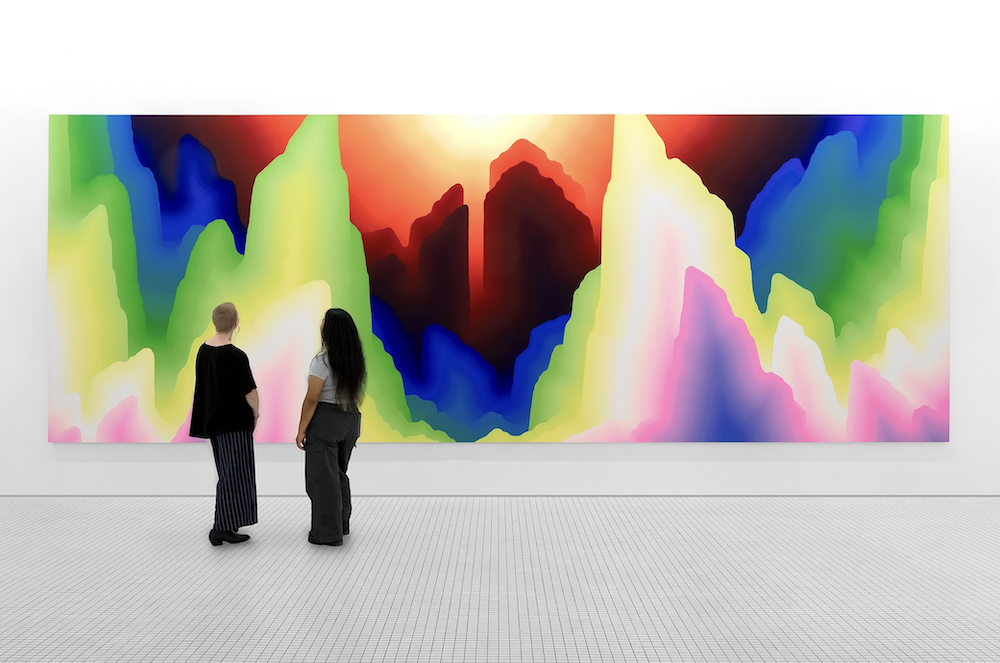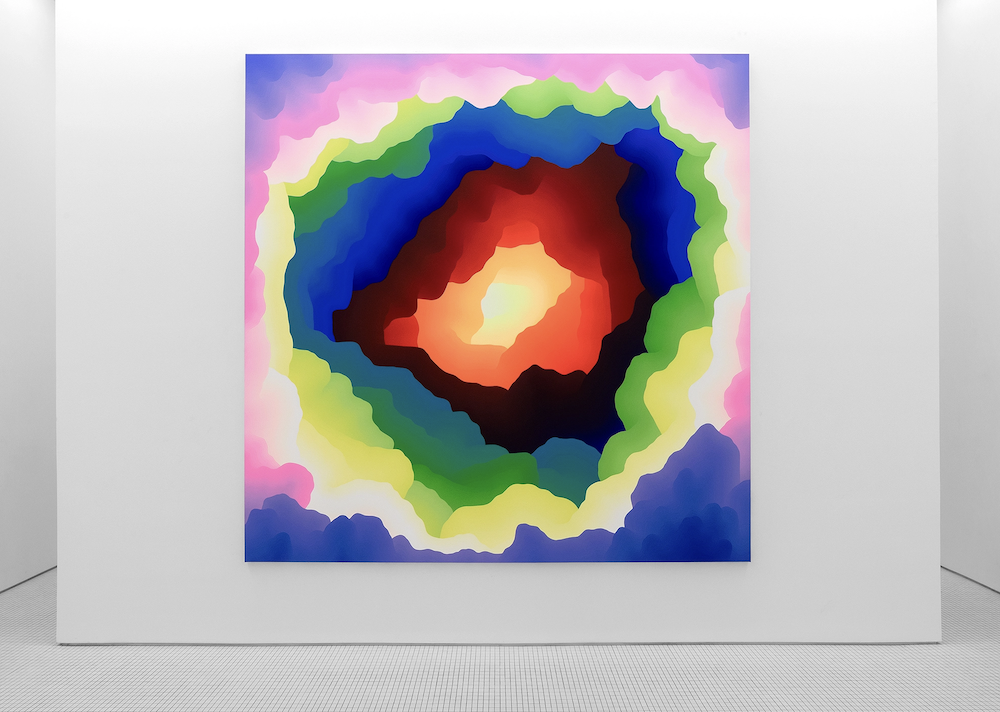"What makes a work of art good for you is not something that is already inside it but something that happens inside you." Brian Eno said this about ambient music, which in the context of painting should resonate as much as the lingering notes of a single piano key in an empty hall. Painting can be an internal experience, an echo between canvas and viewer, paint and room, color and light. It is hard these days in a gallery or museum, bustling with visitors, to hear a painting or group of paintings. But there is a stillness that moves you if you are in the right environment. One can look at the master of the quiet, Mark Rothko, who once said "Silence is so accurate."
But there is something that Rothko, and probably Eno never considered in their quest for internal quiet: the technology that would absolute bombard the 21st century. What is an attention span anymore? What do we pause for? In what ways do we, where do we, how do we, achieve silence and meditation? It's so hard now in art spaces to get that experience because, everyone and myself included, is photographing, filming, documenting. This isn't a discourse of punishing a contemporary viewer, but there are so many places where we now running out of silence.
Sam Friedman has for the last decade attempted to reassess and reexamine the landscape painting. To“realign with [their] natural pace” as he says. The New York-based painter has realigned himself as an artist to understand what it is that the gallery or studio experience is lacking in terms of the experiences we have in solitude in nature. That seems like a simple experiment in selfhood, but there is something more than that with the works that he presents in Temple of Silence at Library Street Collective. These are paintings that attempt at silence. They are the colors seen in the back of your eyelids. It's the painting, the perception of returning to Earth from a spaceship of the contemporary superhighway of information.
"Within the four walls of these paintings, I set out to create an environment where people can let down their walls," Friedman wrote to me. "One of these types of facilitators; a facilitation station. A place for time and space, where you can realign with your natural pace. Filling the field of vision of the person within the space, was the intention behind the scale of the work, and having the work surround you on all four sides."
The aim of the Temple of Silence is also what Friedman told me was to reenforce the desire to create a publicly available art space that was conducive to taking a sensory break from the greater world. It was hard for me to imagine what that would be in this world, at this time, the amount of noise and distracted so afforded to us, available at all time, ingrained into our culture like a heated branding iron to the skin. These are portals, gentle and caring, quiet and respectful to the viewer just as we enter and are respectful to them.
What struck me the most about Friedman's approach here was just this: the amount of respect he had for the creation of the work, but the viewer themselves. His care for himself and his own mental health is also given to the viewer as a chance for a naturally sacred experience to tune into the gravity of the works. Silence is so accurate, and here maybe we can find some answers. —Evan Pricco



